|
|
|
|
|
|
|
|
|
|
|
September 30, 2002 |
|
|
|
|
|
|
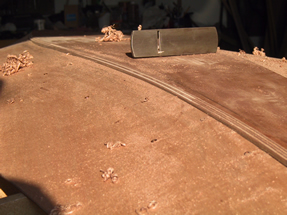 |
|
 |
|
|
Finish by beveling bottom plank
edges to the slope of the garboards. Garboards are then screwed to the station
molds. |
|
A sort of spiling batten used to approximate
the curve of the top edge of the skeg. |
|
|
|
|
|
|
|
|
|
|
|
|
|
|
|
|
 |
|
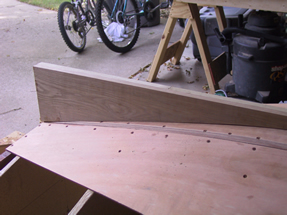 |
|
|
Skeg is constructed by laminating two 7/8"
X 7 1/2" pieces of ash. |
|
On the bench the skek is tappered from 1 1/2"
on the top to 1" on the bottom. Plane and belt sander. |
|
|
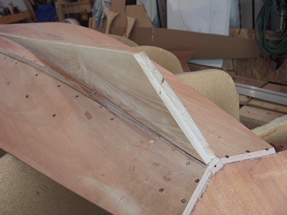 |
|
 |
|
|
Attach the skeg using epoxy and 2"
screws from the top side of the bottom plank. |
|
Two planks, first planks, are faired using a
rabbet and block plane. |
|
|
|
|
|
|
|
|
 |
|
|
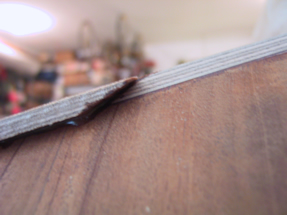 |
|
|
|
Gains are cut into garboards and
planks fore and aft. |
|
First plank is glued and clamped in place. |
|
|
|
|
|
|
|
 |
|
 |
|
|
Extra clamps are used near the gains to ensure
they lay flat. |
|
Spiling batten used to get out the third plank. |
|
|
|
|
|
|
|
|
|
|
|
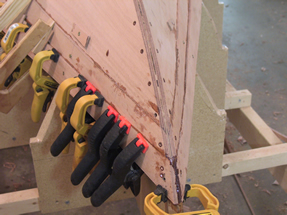 |
|
 |
|
|
After epoxy sets up, transom and
stem ends of the planks are faired and excess epoxy removed using block
plane. 7/8" silicon bronze screw are used. |
|
Starting to look like a hull! |
|
|
|
|
|
|
|
|
|
|
|
|
|
|
|
|
HOME |
|
|
|
PAGE 5 |
|
|
|
|
|
|
|
|
|
|
|























